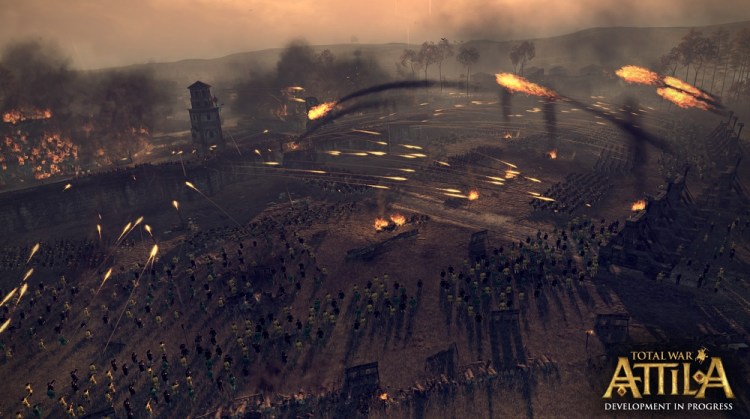Rome has 600,000 soldiers at this point in its history — the most it ever had. But the armies are spread so thin that it seems like there aren’t nearly enough.
It’s a time of deprivation and disease. You can wipe out a city, burning it to the ground, to deny its resources to the enemy. If your army catches the plague, you can march it to the enemy’s city and besiege it in hopes of spreading the germs to the city. It’s a very evil kind of germ warfare. Diseases can also travel along trade routes.
The Creative Assembly has improved the faction management in the game. You can go into the family tree and use the characters in your empire in appropriate roles. You can assign characters leadership roles, adopt new members into the family, and train them in governance. You can see the character leading the troops in battle, and he brings his unique skills to the battlefield. Your characters live longer than they did in Rome II, so you can invest in them more.
City management is a lot easier, but it’s also more sophisticated. You have to take care of the city to prevent disease from breaking out. If you don’t invest in sanitation, diseases are more likely to spread. Each region is influenced by the religious beliefs of the population. That layers on top of the national borders of the different empires.
During the course of the game, you have to build up the empire’s health so that you can be ready when Attila finally arrives. You have to pay attention to building the walls of each city. You have to make sure it has the right features to help it withstand a siege.
You may find yourself fighting over the same ground but at different times of the year. That means that there may be floods or snow that slows the progress of your troops.
In the hands-on portion of the preview, I was able to play a single-player scenario. In that battle, the barbarians attack a Roman city that is already in a state of disrepair, with big gaps in the walls. I had about 10 army units, including infantry, some horses, and archers. But there were too many parts of the city to defend. I placed barricades in the choke points where my soldiers could stand and guard. I had a couple of catapults to shoot heavy rocks at the enemy, but the enemy had many more. The enemy forces were huge, and they were lobbing fire at my walls.
If they succeed in burning a lot of the city, they can demoralize your troops and cause panic among civilians. In this battle, there were no civilians for me to protect. In the first battle, I put too many of my soldiers on the broken walls, and the enemy swarmed in and easily reached the center of the city. The battle was over.
In my next try, I pulled my defenses back to the choke points. At the barricades, the enemy soldiers smashed against my lines. But they couldn’t break them very easily. I used my reinforcements to shower them with rocks and arrows, shattering their morale. I managed to destroy a couple of formations of the enemy. But eventually, my troops became exhausted. My soldiers broke and ran. I lost that battle, too.
By the third time, I had a better idea of what to do. The enemy came into the city. I sprung some traps. And I moved my reserve troops into the action as needed. The enemy ran, and I chased after them. But I ran my troops too hard. They got tired again, and their lines collapsed as the enemy rallied.
“It’s a hard scenario,” said Dominique Starr, a game designer at The Creative Assembly, in an interview. “It’s quite important to funnel the enemy through the settlement and use your towers against them.”
After three tries, I couldn’t beat the computer opponent. But it was a lot of fun, and I am very much looking forward to this game’s arrival on the Windows PC and Mac in 2015.
VentureBeat's mission is to be a digital town square for technical decision-makers to gain knowledge about transformative enterprise technology and transact. Learn More




